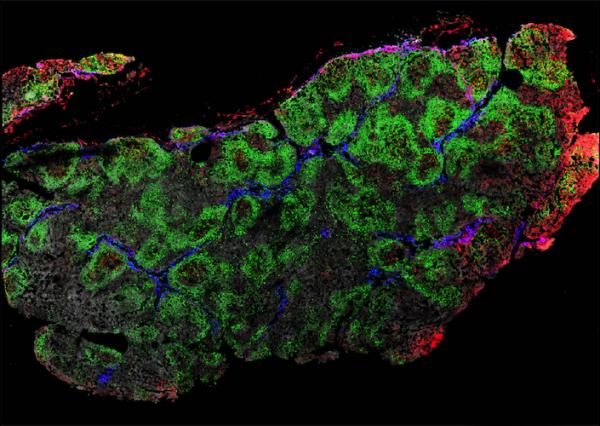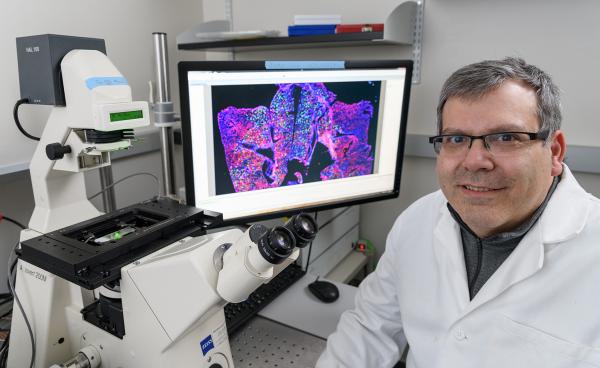Vaccines save the lives of millions of people every year. While vaccination has helped eradicate some diseases like smallpox and drastically reduce others like polio, new vaccines to combat other widespread pathogens have proved elusive. Additionally, for emerging virus vaccines, there is a need for more rapid development and large-scale deployment.
RNA-based vaccines, a promising new approach to vaccination, mimic infection in a different way and offer a more robust, more versatile, equally efficient method to stimulate the immune system compared to conventional approaches. Also, in the world of RNA vaccine research, synthetic mRNA has emerged as a safer, more effective, less expensive, and scalable method for vaccine development.
Phil Santangelo, associate professor in the Wallace H. Coulter Department of Biomedical Engineering at Georgia Tech and Emory University, and his research team have developed a new, non-invasive approach for PET/CT scanning which combines radionuclide and near-infrared imaging. This new approach promises to accelerate mRNA vaccine efficacy determinations that will be especially useful during preclinical and translational vaccine studies.
They published their results in the journal Nature Biomedical Engineering. The research was funded by DARPA, as a part of a collaborative project involving CureVac, Sanofi Pastueur, and In-cell-Art.
“This collaborative effort allowed us to explore a new toolbox for interrogating mRNA-based vaccines, in a relevant pre-clinical model,” said Santangelo.
Most approaches to vaccine studies are dependent on host-responses that take months to develop and include invasive study methods. There is also a time gap between the administration of the vaccine and evaluation which may result in potential infection with the pathogen of concern before vaccine protection is verified.
Santangelo’s team, using a large animal model, can now monitor and quantify the delivery of a mRNA vaccine to all organs within the body including the draining lymph nodes (LNs). LNs are secondary lymphoid organs whose main function is to filter lymph originating in interstitial tissues throughout the body before it re-enters the circulation. The recognition of pathogen antigens triggers a cascade of local immune reactions, which ultimately result in the development of antigen-specific adaptive T cell immunity and humoral responses. LNs therefore play a central role in many immune system functions.
His team used a synthetic mRNA expressing a yellow fever antigen for their mRNA vaccine delivery and imaging experiments. The current yellow fever vaccines are very effective, hence the gold standard for comparison with a newer approach, such as mRNA-based vaccines.
The mRNA was labeled with radioactive and near-infrared probes, then tracked with PET/CT scanning. The PET/CT tracking data, over a 28 hour period post immunization (by intramuscular injection), demonstrated a quantitative, tomographic, and sensitive method to follow mRNA trafficking (bio-distribution) upon delivery in an in vivo setting. Simply stated, he could see and measure that the mRNA vaccine was reaching its intended target organs. Then using the near-infrared signal, the localization and function of the mRNA was interrogated at the cellular level. Overall the approach allows for the interrogation of an mRNA-based vaccine from the whole body down to the single cell.
Understanding the distribution of vaccine in vivo over time more quickly in large animal models using this PET/CT scanning method could aid in determining vaccine efficacy in preclinical and translational vaccine studies, thus speeding up the delivery of new therapeutics in this area.
“This work has opened the door to a number of new studies, allowing us to quantitately compare mechanism across pre-clinical model systems. This work clearly has the potential to improve future mRNA-based vaccine formulations,” said Santangelo.
The following researchers also co-authored this study: Kevin E. Lindsay, Sushma M. Bhosle, Chiara Zurla, Jared Beyersdorf, and Daryll Vanover of Georgia Tech; Kenneth A. Rogers, Peng Xiao, Mariluz Arainga Ramirez, Lisa M. Shireff, and Francois Villinger of University of Louisiana at Lafayette; Bruno Pitard of In-Cell-Art, Nantes France; and Patrick Baumhof of CureVac AG, Tubingen, Germany.
Media Contact:
Walter Rich
Communications Manager
Wallace H. Coulter Department of Biomedical Engineering
Georgia Institute of Technology
Media Contact
Walter Rich
Keywords
Latest BME News
Jo honored for his impact on science and mentorship
The department rises to the top in biomedical engineering programs for undergraduate education.
Commercialization program in Coulter BME announces project teams who will receive support to get their research to market.
Courses in the Wallace H. Coulter Department of Biomedical Engineering are being reformatted to incorporate AI and machine learning so students are prepared for a data-driven biotech sector.
Influenced by her mother's journey in engineering, Sriya Surapaneni hopes to inspire other young women in the field.
Coulter BME Professor Earns Tenure, Eyes Future of Innovation in Health and Medicine
The grant will fund the development of cutting-edge technology that could detect colorectal cancer through a simple breath test
The surgical support device landed Coulter BME its 4th consecutive win for the College of Engineering competition.









